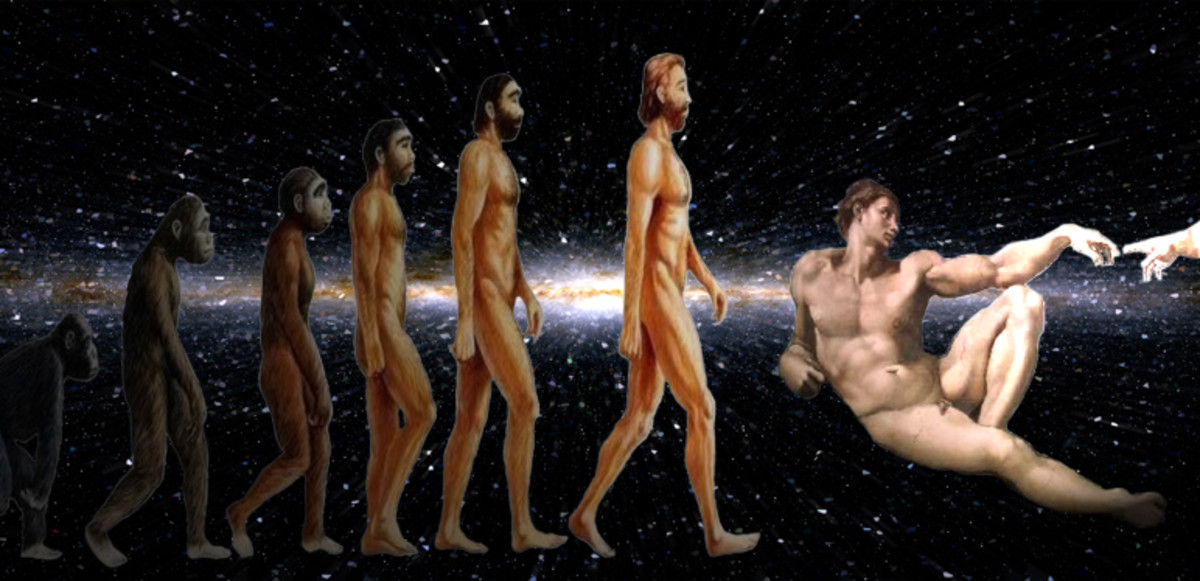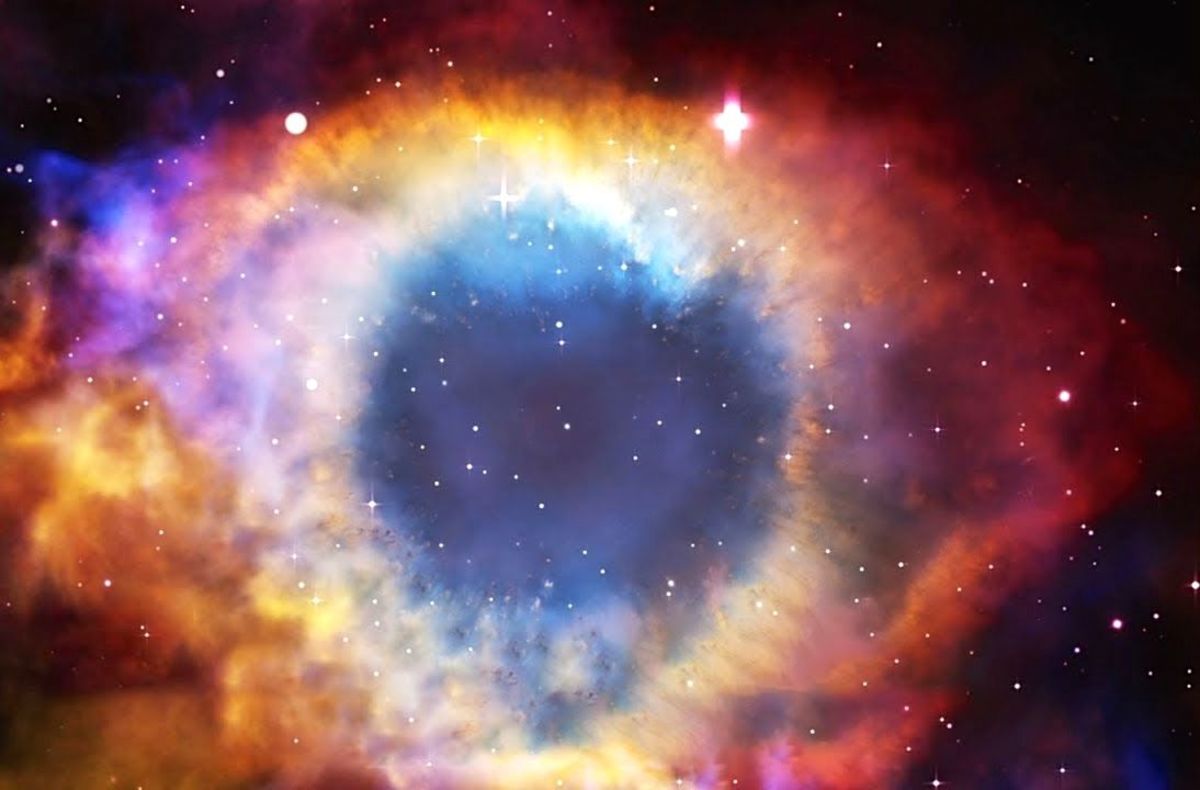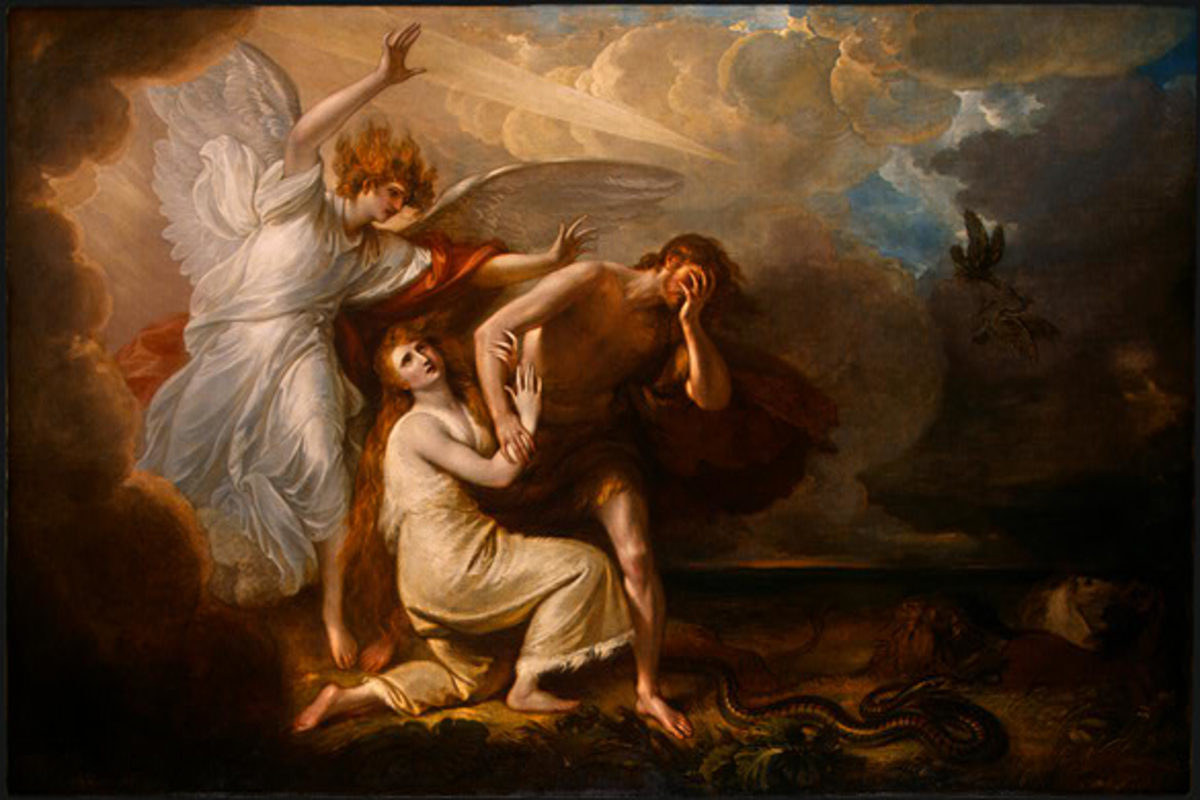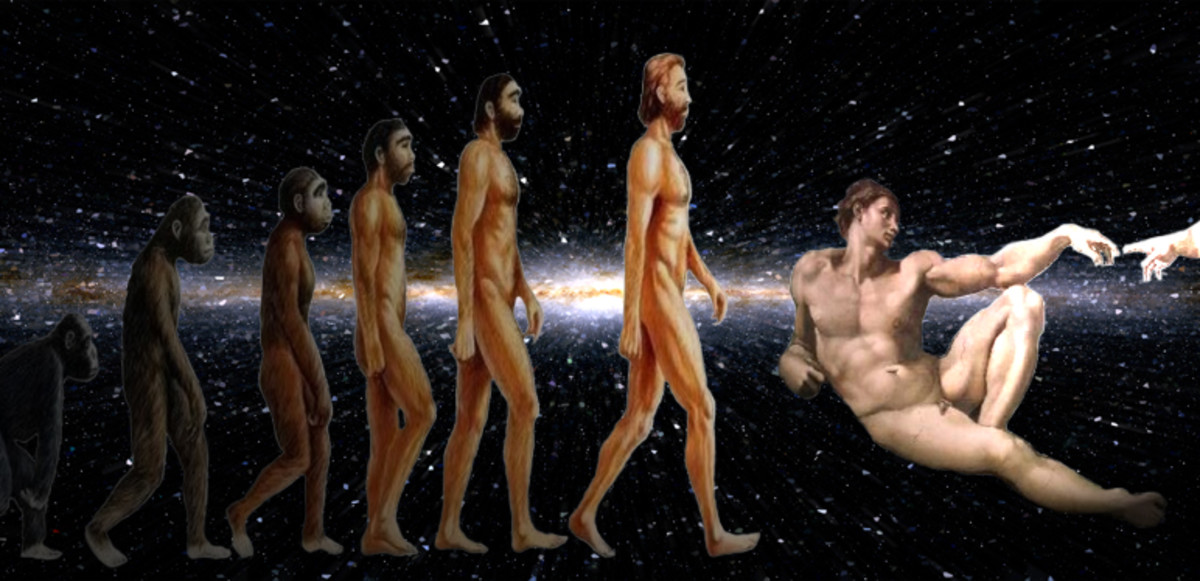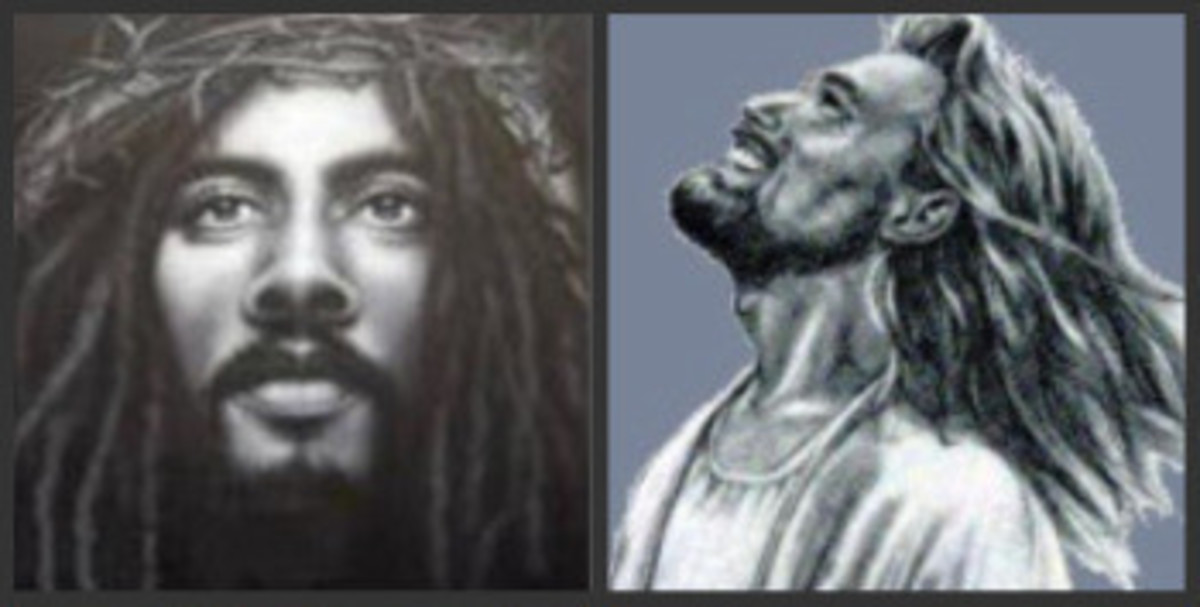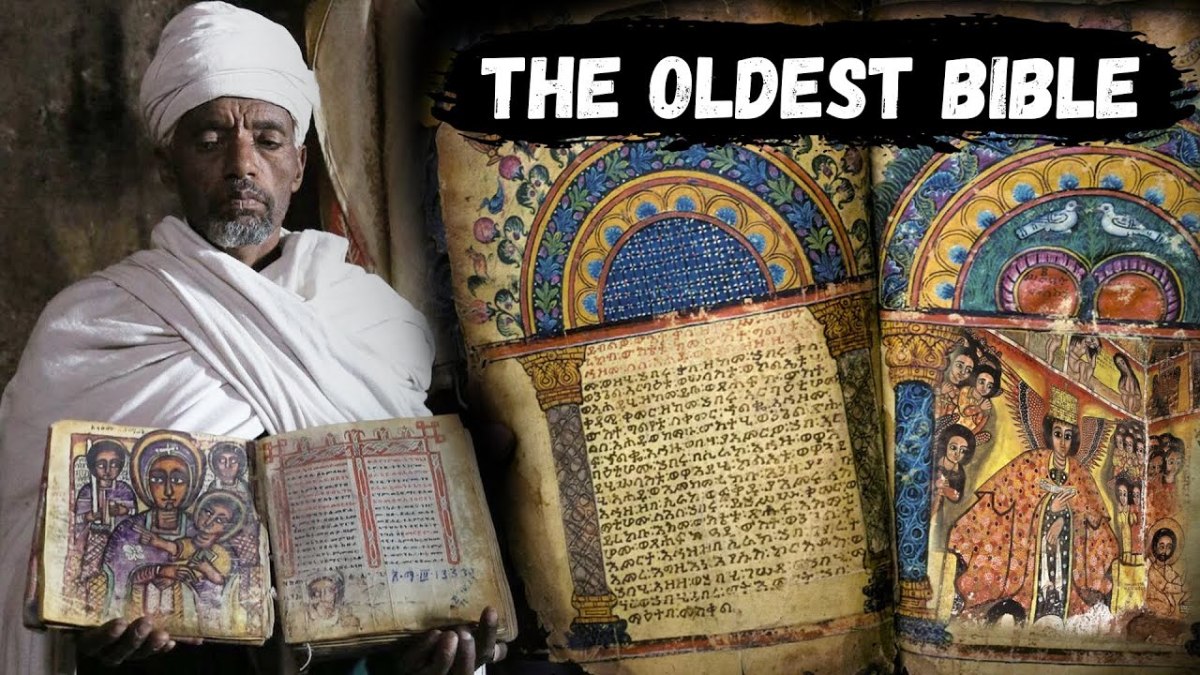Should the Creation Story Matter? (Part Four)
The Sixth Act of Creation: Part One
The first two articles in this series followed the creative acts of God, focusing specifically on the owr (light), raqiya (firmament), and zera (seed) that He used to defeat the powers of chosek (darkness) and tohu (chaos). The third examined the creation of the ma'owr (light; i.e. of the sun and stars), and the population of the raqiya and the mayim (seas) with birds and fish. The articles also examined two 'trends': firstly, the first six days can be divided into two sets of three. As is mentioned above, the first three days focused on God as he pushed back the tohu; the second three days have been focusing on Him as he populates the vohu, or void. The second trend involved the process of creation: in the first set of three days, God twice used a creation-by-separation technique (owr from chosek, raqiya from mayim) and ended by using it again, this time in conjunction with a creation-by-differentiation technique. On that third day, the zera was created: the seed that was designed to forever protect the future from the tohu. By examining these patterns, we should expect the sixth and final day of Creation to mirror the third day, in that two creation techniques will be used to create something that will forever protect the future of Creation.
The sixth day begins in Genesis 1:24, with God commanding the אֶרֶץ (erets: earth) to bring forth חַי (chay) נֶפֶשׁ (nephesh). These are two big words in the Old Testament, and both have to do with life. Chay is simply the idea of being alive: it can be translated as life, sustenance, maintenance, and appetite. It also carries pictorial translations such as green grass, fresh water, an active man, and the revival of spring. In other words, chay is simply the concept of being alive. Nephesh, on the other hand, has a more concrete meaning. It refers to that indefinable essence that makes us, us: it translates as soul, self, mind, desire, emotion, passion, and appetite - among other things - and has a pictorial translation of a three-tiered seat, or throne, of human emotions and passions. The tiers of this throne are activities of the mind, activities of the will, and activities of the character. So, though 'living creatures' is a possible translation of Genesis 1:24, a more well-rounded interpretation might be 'Let the earth bring forth all that is life and has life in it.'
God then appears to specify three types of animals for the earth to bring forth: the KJV Bible translates His words as "cattle, and creeping thing, and beast of the earth". The words used here are בְּהֵמָה (behemah) רֶמֶשׂ (remes) and then a repetition of the word chay. Behemah properly refers to any large quadruped, while remes refers to anything which moves along the ground. The placement of the word chay at both the beginning and end of this verse carries, to my interpretation, a sort of 'sandwich' connotation: God is creating life, specifically the nephesh of the behemah (four-legged beasts) and the remes (all things that move upon the earth). God then declares the life to be tov.
The Sixth Act of Creation: Part Two
Then, in Genesis 1:26, God declares 'Let us make אָדָם ('adam) in our צֶלֶם (tselem) and after our דְּמוּת (demuwth); let 'adam have רָדָה (radah) over all the דָּגָה (dagah), and all the עוֹף (owph), over and all the behemah, and all the remes.
The translation of each of these Hebrew words is critically important to understanding the verse. Beginning from remes, we see the four words that up until this point have constituted the entirety of chay nephesh up until that point (this kind of life was ascribed to the dagah and to the owph, fish and fowl, in Gen 1:20; and to behemah and remes in the previous verse). So, then, over all of the chay nephesh, this adam is given radah: a fairly violent word that means to subjugate or to take from. This does not necessarily mean that man was given free rein to trample over creation, however, and the context of the word radah will be explored momentarily.
Now this adam is no ordinary creation: it was created in the tselem and demuwth of God. Tselem, often translated as 'image', is used most frequently to describe the image of an idol - something that is supposed to be a representative figure of a god. Demuwth means 'in resemblance of' or 'in likeness to'. Thus, this adam - whatever it is - has been fashioned in the likeness of God to be a representative figure of God. The importance of this must be noted: Genesis 1:26 is not telling us that God must have a nose, since we were made in His image; it tells us that in mankind there is a spark of the divine. Demuwth is used again in Gen 5:1, to describe the likeness of God in man, and in 5:3 to describe the likeness of Adam in Seth. The immediate parallel in those two verses cannot be ignored, and the implication is that we are to God like a son is to a father. Our DNA is the DNA of our fathers, yes, but it is also the DNA of our Father. Further: as we are thus akin to Him, we are meant to be His representatives throughout creation.
Now for that final word: adam. What is an adam? The word has been traditionally translated as a proper name, and many don't actually realize that there is any debate at all as to the translation of this word. Those that do know that it is a controversial and, sadly, at times fierce and testy debate. The arguments for and against the translation of adam as Adam are based in prejudice, reason, and Biblical interpretation, and oftentimes are sound on both sides. That being said, the most significant issue I see with translating adam as Adam here is in the way adam is used in the next verse. There, in Gen 1:27, God reiterates and adds to His creative declaration: He will create adam (the same word is used again), in His own image - 'male and female He created them'. I am assuming continuity of translation throughout His creative act (there are those who argue that adam could have meant Adam the first time God used it and mankind the second time), so I interpret this passage to refer solely to the creation of mankind.
God's Commission
The word radah is used again in verse 28, this time in conjunction with כָּבַשׁ (kabash, pronounced kavash) which has a whole litany of its own violent connotations. So, was man placed in Creation to violently stamp down everything God had made up until that point? The only thing I can say is, maybe. People use these words to support violence and butchery towards animals and the earth all the time, and it's possible that they're right to do so. But if we read ahead a little bit to Genesis 2:15, where God 'took the man, and put him into the garden of Eden to עָבַד (abad) and שָׁמַר (shamar) it', we see a very different image than the one painted by radah and kavash. Abad means to labor, work, serve another and serve God; shamar means to keep, guard, protect, and even to save someone's life. So, why the discrepancy between radah and kavash and abad and shamar? There are a few different explanations and interpretations of this: one that I find intriguing is that mankind is meant to radah and kavash creation so that it is in line with God's will. This interpretation takes a more conceptual approach, contending that mankind was commissioned to radah and kavash the vohu in Creation, and to abad and shamar the tov, rather than the actual earth and animals. Given the fact that the creation of man mirrors the creation of zera, which itself occupies the role of 'protector and steward of the future', this interpretation seems the most plausible to me.
Now God's Creation was full. The sun, moon, and stars looked down upon the earth, which was teeming with all manner of fish and fowl, beast and man. Importantly, God had finished the second set of three days as he had finished the first: by creating (with both separation - man from earth - and differentiation - male from female) something that would forever protect the future of His work. Whereas the zera, that mighty seed, worked behind the scenes to ensure that all life would continue to unfold in line with God's will, it was the work of its physical counterpart - the very image and representative of God - to see that the earth would be forever protected.
God ends His acts of creation by giving man and beast all manner of plants and fruit for food (literally, for אָכְלָה: oklah, food. The implication that mankind was originally created to subsist on plants should not be ignored, as it is not until Genesis 9:3 that He declares 'every moving thing shall be oklah for you'), and by beholding His Creation and declaring everything to be מְאֹד טוֹב (mehode tov: exceedingly, mightily, abundantly good).

Series Conclusion and Takeaways
The title of this article series is 'Should the Creation Story Matter?' After spending almost a year devoting my attention to this passage, here are some of the key takeaways I see in all this.
- The Creation story introduces several patterns that will resurface in other Biblical accounts, and learning to recognize these patterns is part of learning how to understand the Bible as a cohesive unit. For example, we saw God using creation-by-separation and creation-by-differentiation techniques when overcoming the forces of darkness: this is not a one-time occurrence. In Genesis 12, in the aftermath of the Tower of Babel and the scattering of the nations, God tells Abram that he will make 'a mighty nation out of him' - a nation separated from nations, that would overcome the chaos and the ruin of the earth. More generally, God twice spent two days defeating the forces of darkness and then on the third day ensured that those forces would never have the upper hand again. Think ahead to the New Testament: isn't there something in there about God ensuring on the third day that the darkness would forever be defeated?
- In the vein of recognizing patterns, take note of the fact that the creation of man is part and parcel of God's "Make a Way" mission. He spends three days beating back the forces of chaos and creating space in which life can and always will live, and three days filling that space with chay nephesh. He then sets adam in the Garden - His very tselem and demuwth - to protect, serve, care for, and steward His Creation into the future. This is a critically important role, to be sure, but we have to recognize that man is by no means the 'point' of Creation. In fact, on the seventh day - seven is, incidentally, the Hebrew number of perfect completeness - when all the creative acts have been accomplished, God simply rests. On that seventh day, He and all His creation bask in the light of mehode tov. Thus we see that the 'point' (or at least the conclusion) of Creation is a day in which all darkness has been driven out, and all life revels in a space filled with owr and zera, in harmonious union with itself and in intimate relationship with God. That is the end goal of Creation; to my mind, that is how all things will be in the end.
- The owr of day one and the zera of day three are beyond beautiful.The warm feeling you experience when you hold a newborn in your arms? Creation is swimming in zera, the eternal hope and providence of the future. The companionship experienced with friends, family, and loved ones? The abundant joy of the light of life is filling your heart. Even before you were conceived, you were filled with these forces for tov: music, story, and art all reflect it. Yes, of course there is darkness, but in the midst of the darkest chosek there is still owr. Even in the wake of terrible tragedy, there is always zera. Every day I take comfort in the fact that God has filled my nephesh and the raqiya around me with light and hope.
So, does the creation story matter? The answer, in my opinion, is a resounding yes. Apart from establishing Biblical precedents, both in pattern and narrative, it is simply an immensely beautiful story. It resounds with the love and providence of God, reminds us of the beauty and power of goodness in Creation, and shows us that no matter how dark things are now, a day is coming in which all things will rest in the perfect love of God.


